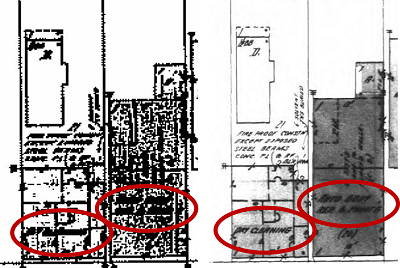Same Property, Different Conclusions: Why Environmental Site Assessments Vary From Report to Report
Some of the most common frustrations voiced by property purchasers and developers have to do with repetition and variation within the environmental due diligence process. Why is it necessary to conduct a Phase I Environmental Site Assessment (ESA) if one was completed by the previous owner? Why are there variations when comparing a current Phase I ESA with a previous report on the same property?
We asked Beth Sexton, PM Environmental’s Chief Operating Officer and a Phase I ESA specialist, to address these questions. In her previous role as the company’s National Manager of Due Diligence, Sexton oversaw all aspects of PM’s 3,000 – 4,000 annual transactional due diligence projects.
“Customers may not believe it is necessary to conduct a Phase I ESA if a previous report is available,” she confirms. “Or, they may anticipate that a new Phase I ESA will confirm the findings of the prior report. It’s our job to educate them on the real but avoidable risk of placing too much stock in due diligence performed in the past.”
Specifically, Sexton identifies four common reasons – none necessarily the result of past negligence – why new reports often generate new information and sometimes highlight environmental risks not previously identified:
1. Better assessment resources become available.
Current due diligence is likely to produce a more reliable and complete picture of the property’s environmental history than past reports. That’s due to improvements in the quality of the resources available. “We see past reports that had to rely on hand-drawn Sanborn maps,” says Sexton. “Over time, those maps may have been photocopied until virtually illegible. Today’s high quality digitized maps result in larger coverage and better clarity.”
Here’s an illustration from a recent client experience. The current map above clearly indicates the presence of a dry cleaning facility that can’t be made out on the older, photocopied drawing relied on in a previous report.
2. Regulatory requirements change.
The Environmental Protection Agency (EPA) sets the minimum requirements all states must meet. Beyond those regulations, each state can overlay additional, more stringent requirements, and there can be significant variation from state to state. “For example, in many areas the Michigan Department of Environmental Quality (MDEQ) has already established or is moving toward tougher standards than those of many other states,” explains Sexton. “Developers who operate in several states are often surprised by Michigan cleanup requirements after being required to do less in another state.”
3. Science produces new knowledge.
Science continues to shed new light on the potential health risks present in the environment and how best to manage those risks. “Our experience with properties previously occupied by dry cleaners is a great example,” Sexton says. “For decades we’ve known that the release of petroleum or chlorinated solvents from dry cleaners pose health risks. But just within the last decade or so, we’ve come to understand the risks associated with vapor intrusion at these locations. What was satisfactory in an older report might no longer be acceptable.”
Learn more about vapor intrusion here.
Additionally, chemicals characterized as emerging contaminants, notably perfluoroalkyl and polyfluoroalkyl substances or PFAS, are another area where science is driving change in due diligence.
4. Today’s due diligence may be more diligent.
While there are well-established standards for Phase I ESAs, it is not uncommon to see different environmental consultants take different approaches to due diligence. “Not everyone uses the same source materials, and a different outcome can result from using the easiest or cheapest approach, rather than the best,” explains Sexton.
For instance, the standard calls for making a ‘reasonable attempt’ to review city office records. Sexton notes that PM has worked with clients whose previous consultants have submitted Freedom of Information Act (FOIA) requests to signal that an effort had been made to review records, then publish reports shortly after indicating that no response was received.
“Our approach is different,” she explains. “We physically go to where those records are available and review them. In one case, our on-site review of fire department records of a gas station property identified underground storage tanks not previously reported.”
The Takeaway
When it comes to environmental due diligence, the devil is truly in the details. No substitute or short cut can take the place of a current, comprehensive Phase I ESA when purchasing a property. Unknown or unverified reporting methods, as well as changes in regulations, are likely to render past reports unreliable.
“We’re sometimes seen as the bad guys because we find issues that others have missed, even though they may have always been there,” says Sexton. “But we’re actually the good guys. We provide a clear, current picture of the environmental risks present at a location. That protects both property owners and the public.”
Publication Details
Date
September 20, 2018



